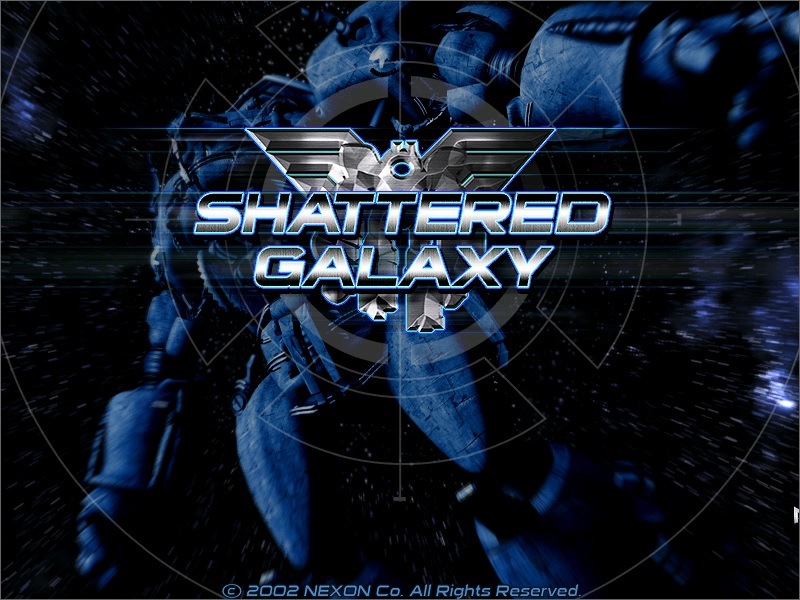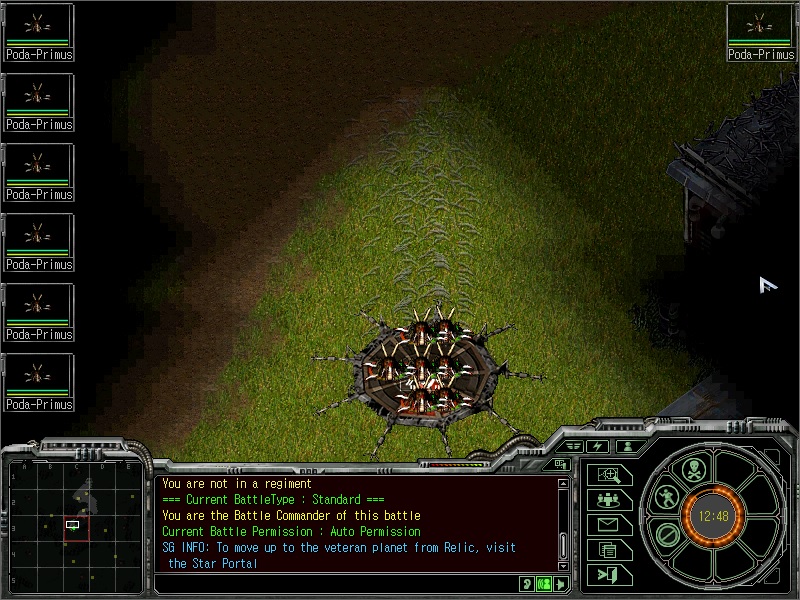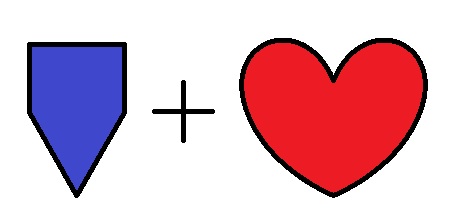And now for something completely different... As I delve into customs and rebalancing Heroscape to what works with my group as well as Custom Heroscape figures such as my Descent conversion, I wanted to bring up some things I've thought about general game design over the years. In a large majority of games, there is a give and take with units/cards/figures/etc. There are lots of elements of game design, but one element of design I wanted to highlight here is strengths, weaknesses, and roles.
Magic the Gathering and Pokemon come to mind immediately when I think about strengths and weaknesses. In Magic: The Gathering you often have decks that attack in different angles or at different speeds with strategies to try to advance your gameplan while often impeding your opponents gameplan to get the upper hand. In Pokemon video games, you have Pokemon types that have strengths and weaknesses against other pokemon types, dealing extra or less damage. Game theory and design often calls this Rock/Paper/Scissors. Everything has a strength and weakness creating a healthy give and take to the game. Heroscape has some of that as well with how the units are designed, but it is more subtle and often not as blatantly obvious.

What is Shattered Galaxy?
Before I get ahead of myself, Shattered Galaxy is a old MMORPGRTS made years ago. It had a large following under different names in different languages originally and was later adapted to an English speaking audience. The game was strong for years allowing a lot of diverse gameplay. It is still around today, but is only active once in a blue moon when old players agree on times to meet up and play. I won't go over the entire gameplay and mechanisms of what make the game great, but I will go over a brief overview and then hone in on some mechanics that follow the strengths, weaknesses, and roles theme of this article.

Shattered Galaxy is a RTS, which in essence is a miniatures combat type game at it's core. If you have your own experiences with RTS games, or many other types of games, those could also aid as a general referencing viewpoint for this article. Shattered Galaxy has a world map that is divided into territories. If someone enters a territory of a faction that they aren't in, a battle ensues and they have to capture the Points of Capture/Control (POC) in the map to claim that territory for their faction. There are different battle types which treat the capturing of points differently though the overall goal is to control all or most of the points until you win. Typical battles would be between 15-30 players from two different factions fighting over the same territory.
You had 48 units total you could keep in your army, but you only fielded 6-12 of them at a time. You and your teammates worked together to try to defeat your opponents. When your units were destroyed or you retreated them out of battle, you could send out different units after a certain amount of time to reinforce the battlefield. As your units fought, they gained experience and levels, and your hero gained experience and levels as well. You could equip each unit individually and differently based on it's level and the stats of your hero. Upgrading units into better qualities or different units all together was also a thing, sort of like Pokemon evolutions in a way. The new unit usually differed in several drastic ways, and had a completely different feel than the original, more than Pokemon did.
We can ignore the MMO and RPG parts for this article for the most part. The equipping part based off of stats really intrigued me and that is where the strategy was in the game. You could control the amount of health, armor, damage, movement, range, and some special abilities all with equipment setups. Equipment setups could greatly vary the role your units were best suited for in combat. It let you tinker with "designing/carefully crafting" a unit and it's role more than in more other RTS games.

Armor and Health
Let's get back on track of the meat of the article. The mechanics I wanted to look into specifically were the combat mechanics. The game had an interesting mechanic of Armor. Armor reduced damage by the amount of armor you have. As a aspiring game designer in my teens, it seemed to me like Armor was absolutely broken as it was flat damage reduction. I tried a mediocre damage unit against a heavily armored unit and I did basically nothing to the enemy unit. Now there was a minimum amount of damage that would be dealt through armor, but it was very low like 1-10 damage, when units had thousands of hit points. How on earth could you balance around something like that?
There were units that did large chunks of damage, but had lower DPS, that way they could get through armor easier. Armor piercing units also existed, making really heavy armored units less of a threat. Units that were heavily armored usually had to sacrifice hit points to get the higher armor values. You could go all in on armor on equipping a unit, but it usually meant sacrificing hit points to get the armor.
On the opposite spectrum, usually the larger damage shots and armor piercing weapons did less DPS and making units with large health pools and lower armor counteract those strategies. There were some weapons that did low damage, really fast, resulting in high DPS to counteract those high health total units.
You can directly correlate some of those strategies to Heroscape in a way a lot of people may not realize. You have high armor units with low health such as the Deathwalkers, and higher health units with less defense such as Braxas. There are some units with low health and low armor, as well as units with high health and high armor, and everything in between. Units such as squads could be seen as high damage (if the full squad is intact, or a common squad) doing "low/medium" damage with multiple shots (Not to mention in Glyphs, Auras, Height, etc.). A figure like Jotun with 8 attack would be considered the lower DPS but getting through armor much easier. Deadeye Dan's special ability low damage, but armor piercing.
Effective Health and Staying Power
While in Shattered Galaxy there are no dice rolls or randomness, it still can be applied in a loose sense to averages. Depending on the damage incoming, you can calculate the effective health and staying power. They are terms used in Shattered Galaxy to estimate your units defensive capabilities.
If a gun shoots once a second for 100 damage and the target has no armor, you are dealing 100 Damage Per Second (DPS). Since there is no armor, the effective health is equal to the target's health. Let's say the target's health is 1000, making the effective health 1000 and the expected staying power/length is 10 seconds.
In a similar instance, the target has 50 armor, everything else remaining the same. Each shot would be reduced to 50 damage, or effectively 50% damage reduction. After 10 seconds, the attacker would only deal 500 damage with 500 health remaining. The effective health would be doubled to 2000 and the staying power would double to 20 seconds.
In a third instance, there is no armor again, but the health is at 2000. This would make the effective health be 2000 and the staying power be 20 seconds, like the second instance.

These principals can still apply with random dice by using the average rolls in Heroscape. The attack values have a 50% chance to roll a skull (hit) and the defensive dice have a 33.33% chance to roll a shield. In a Heroscape example, let's say the attacker has 4 attack dice that have a 50% chance to hit on each, with an average of 2 skulls rolled per attack. The defender has 3 defense dice with a 33.33 chance to roll a shield on each, giving an average of 1 shield prevented each attack. The defender has 4 health so the effective health would be 8 against this attacker and would have an average staying power of 4 rounds against this attacker.
There are a lot of abilities and factors that can drastically change these calculations or ignore them completely. Survivability against one unit can be less survivability against another unit. There are auto wound abilities, instant kill abilities, height, glyph, range, move, aura, and a myriad of other special attacks and abilities that make determining how good a hero or squad's defensive and offensive abilities are. Design wise, this can make it hard to put point values based off of stats alone. Strategy wise, using knowledge of units Defense, Health, and Special Abilities you can find strengths and weaknesses in units, both in your own army and your opponents army.
Movement, Range, and Roles
Shattered Galaxy has a strategic battlefield where certain units would want to engage in certain ways with certain units, and avoid other units on the battlefield to win the battle. Positioning and maneuvering into an advantageous location was a key element to the game. You had roles such as scouts, hunters, miners, support, artillery, sitters, poccers, clearers, and more. Players used these together to combat the enemy advances.
In the scout/hunters category, you had units that can "shoot and run" in Shattered Galaxy. They typically had high damage and had fast movement. They aim to precisely take down high value targets like artillery that hasn't been setup yet or was aimed another direction, radar scanners, other support units, and whatever else they can find. These scouts and hunters can be very deadly if used correctly, but are typically very frail once cornered. Some have long range and could run in, shoot, and move back out of range again before the opponent can get into range and retaliate. Others are melee, could quickly close the distance to get into melee range without being noticed through speed and cloaking, and could quickly decimate an entire squad of long range artillery units. Both would try to get in and get out before other units noticed them, as fog of war was a thing in the game.

Miners set land and cloaked air mines to try to control movement on the battlefield, mostly protecting the artillery and support units from Scouts and Hunters. They sometimes would also mine the points of capture defensively, but often it was hard to get the miners into position before enemies were swarmed in those areas. Some melee units could get anti gravity boots to help prevent the mines from taking them out and I believe there was something similar for aviation units.
Support units were things like medics, energy rechargers, transports, teleporters, radar, radar jammers, etc. All of them aided the front line units. Artillery usually was meant to shoot long range dealing massive damage and often had no short range capabilities. There are artillery types that can ward off an entire section of the map against flying units, but ground based hunters can walk up and get an easy kill, as well as the opposite for ground based units. Scouts/Hunters would often run around and try to find and destroy these units.
Sitters and Poccers(units that protect and capture the POC) typically sit on an objective to defend or to take the point. There are some differences between them but are pretty game specific, overall they are tanky; heavily armored or high health units that are hard to destroy. Points take a certain amount of time to fully capture in the game, so you want something that can last sitting on them. Sitters protect the POC by standing on it and not letting anyone else get on it, so it can't be captured, sometimes even having pretty good guns to protect it. Poccers would try to live through a lot of incoming damage to take control of points. A strategy is highly effective with some poccing units is to not equip any weapons, to carry slightly better/heavier defensive items, allowing them to live longer. This was of course if they could make it onto the POC, if sitters were not in the way.
The opposite of this in Shattered Galaxy is Clearers. Clearers are bombers or things that do large AOE damage that is highly effective against defensive units stacked up in one area. They often lack the longevity, speed, and/or range to make it an effective tool against normal units, but units that are holding a solid position, such as sitters or Poccers should be cautious of Clearers. After the Clearers clear the way, allied poccers can come and try to hold the point or they can try to stop the opponent's Poccers.
I've seen reviews of Heroscape units based off of chess pieces, so there are different ways to look at Heroscape figures in roles that they may play throughout a typical game. Heroscape may not have a direct one to one correlation to all of the different roles in Shattered Galaxy, but it it does have some of those concepts. The concepts may not be immediately noticeable or pronounced.
This hopefully will shed a little light onto some other ways figures might be used or analyzed other than strict power levels. The Heroscape update/edition that I plan on coming out with will try to make defined roles more noticeable without changing too many things. Not every unit has to fit into a specific role or be a specific counter to something else. It can open up some redesign space or some additional thought to strategy aspects of the game.
About the Author
PauperTim is this websites owner and has always been into games of all sorts. He is a founder of the Pauper format for Magic: The Gathering. You can find him on facebook, twitter or OCTGN as PauperTim or as TheOrangeMitten on Magic Online.